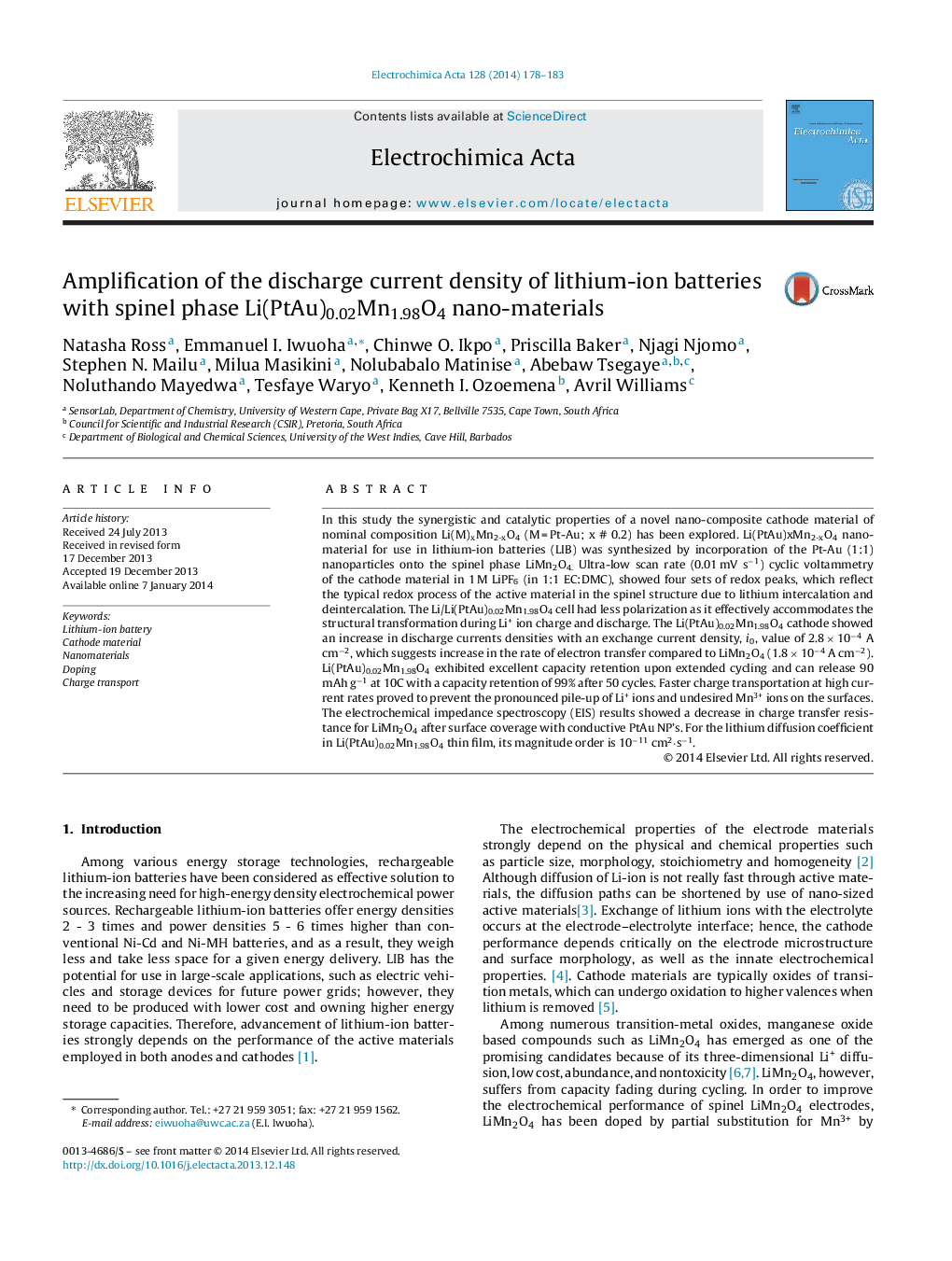| Article ID | Journal | Published Year | Pages | File Type |
|---|---|---|---|---|
| 186088 | Electrochimica Acta | 2014 | 6 Pages |
In this study the synergistic and catalytic properties of a novel nano-composite cathode material of nominal composition Li(M)xMn2-xO4 (M = Pt-Au; x # 0.2) has been explored. Li(PtAu)xMn2-xO4 nanomaterial for use in lithium-ion batteries (LIB) was synthesized by incorporation of the Pt-Au (1:1) nanoparticles onto the spinel phase LiMn2O4. Ultra-low scan rate (0.01 mV s−1) cyclic voltammetry of the cathode material in 1 M LiPF6 (in 1:1 EC:DMC), showed four sets of redox peaks, which reflect the typical redox process of the active material in the spinel structure due to lithium intercalation and deintercalation. The Li/Li(PtAu)0.02Mn1.98O4 cell had less polarization as it effectively accommodates the structural transformation during Li+ ion charge and discharge. The Li(PtAu)0.02Mn1.98O4 cathode showed an increase in discharge currents densities with an exchange current density, i0, value of 2.8 × 10−4 A cm−2, which suggests increase in the rate of electron transfer compared to LiMn2O4 (1.8 × 10−4 A cm−2). Li(PtAu)0.02Mn1.98O4 exhibited excellent capacity retention upon extended cycling and can release 90 mAh g−1 at 10C with a capacity retention of 99% after 50 cycles. Faster charge transportation at high current rates proved to prevent the pronounced pile-up of Li+ ions and undesired Mn3+ ions on the surfaces. The electrochemical impedance spectroscopy (EIS) results showed a decrease in charge transfer resistance for LiMn2O4 after surface coverage with conductive PtAu NP's. For the lithium diffusion coefficient in Li(PtAu)0.02Mn1.98O4 thin film, its magnitude order is 10−11 cm2·s−1.
